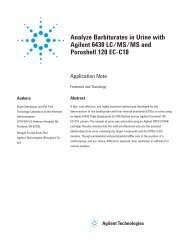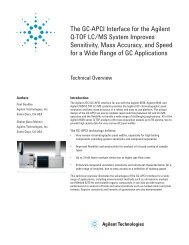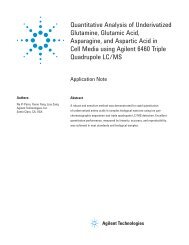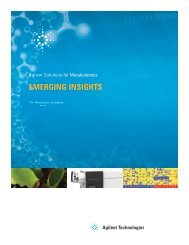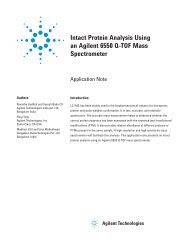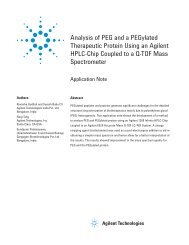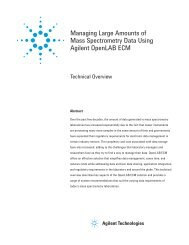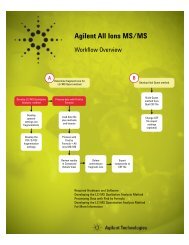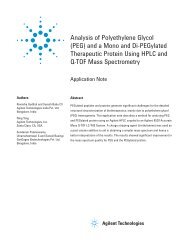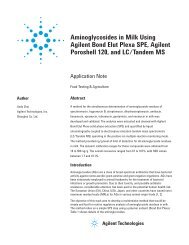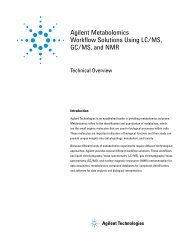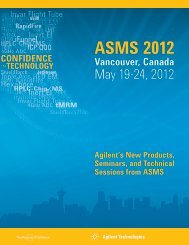pharmaceutical impurity analysis solutions - Lcms-connect.com
pharmaceutical impurity analysis solutions - Lcms-connect.com
pharmaceutical impurity analysis solutions - Lcms-connect.com
You also want an ePaper? Increase the reach of your titles
YUMPU automatically turns print PDFs into web optimized ePapers that Google loves.
3.3RESIDUAL SOLVENT ANALYSISFaster <strong>analysis</strong> and enhancedsensitivity in residual solvent<strong>analysis</strong> as per USP procedures using AgilentGC-based <strong>solutions</strong>Quality assurance laboratories routinely use United States Pharmacopeia (USP) method for residual solvent <strong>analysis</strong>. The Agilent 7697A Headspace Sampler coupledto an Agilent 7890 GC offers a very effi cient solution for the <strong>analysis</strong> of UPSclass 1 and class 2 residual solvents at their limit concentrations in aqueous <strong>solutions</strong>.USP specifi es three procedures for class 1 and class 2 residual solvents:1. Procedure A: identifi cation and limit test2. Procedure B: confi rmatory test (if solvent is above limit)3. Procedure C: quantitative testProcedure A uses G43 phase Agilent 624 columns (VF-624ms or DB-624) andProcedure B uses a G16 phase (HP-INNOWax) column. In general, analytes thatco-elute in one of these phases do not co-elute in the other.As demonstrated in Figures 18 and 19, the Agilent 7697A Headspace sampleris capable of outstanding repeatability for the <strong>analysis</strong> of residual solvents.Repeatability is better than 2.5 % relative standard deviation (RSD) for class 1,class 2A, and class 2B solvents.An inert sample path, thermal zones with set point stability of better than+/- 0.1 °C, and EPC-controlled vial sampling using absolute pressure,all contribute to system performance. Carryover is essentially non-existent in allconfi gurations. User programmable fl ow rates and times, needle/loop purges,and vent line purges are effectively used to clean the system between runs.Laboratories should perform system suitability studies and validate their proposedmethods according to USP or ICH guidelines.For new drug development and quality control, a dual-channel confi guration usingboth FID and a mass selective detector (MSD) is a powerful tool for residual solventdeterminations, especially when unknown identifi cation or confi rmation is needed.This system is particularly well-suited for the development of generic methodsthat do not need to follow USP guidelines. MSD <strong>analysis</strong> also helps avoidambiguity, as over 60 solvents are currently used in <strong>pharmaceutical</strong> manufacturing.When unknown peaks or solvents are present, this system may be the bestsolution for confi rmation and quantitation.26



